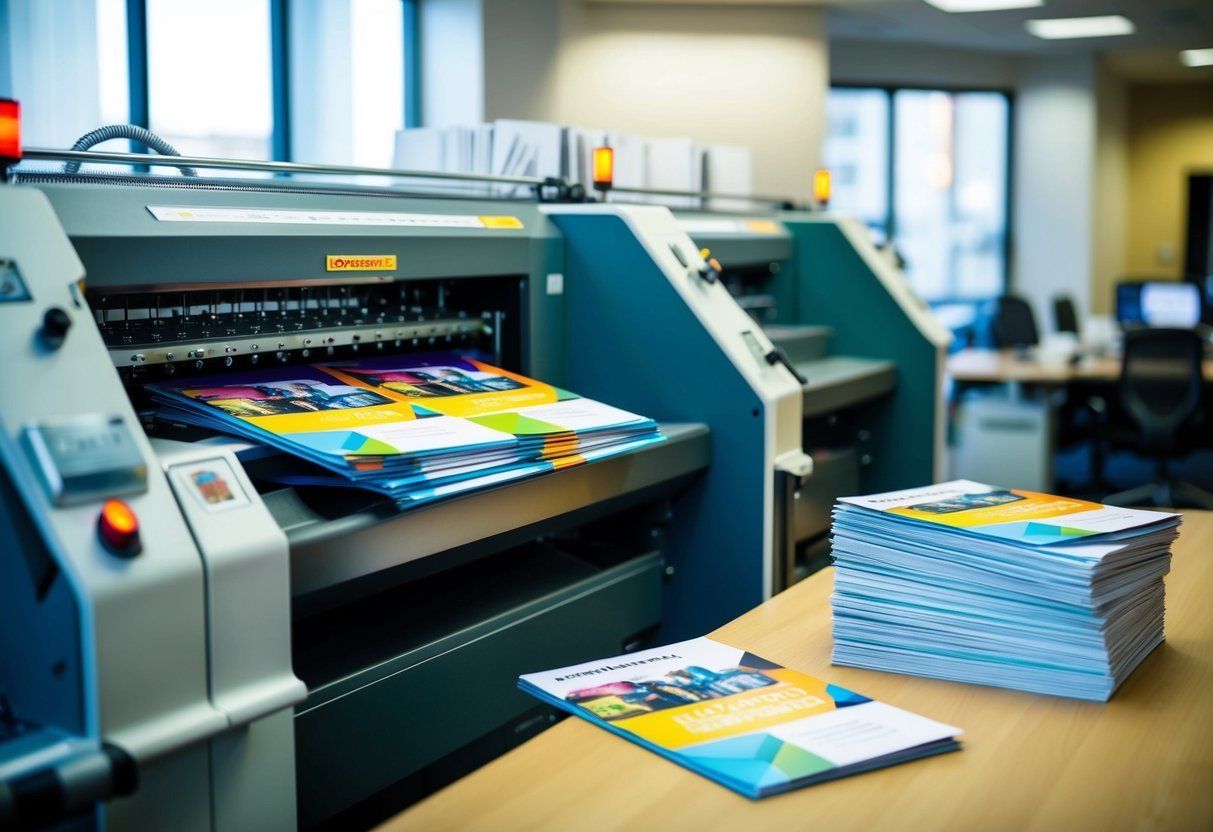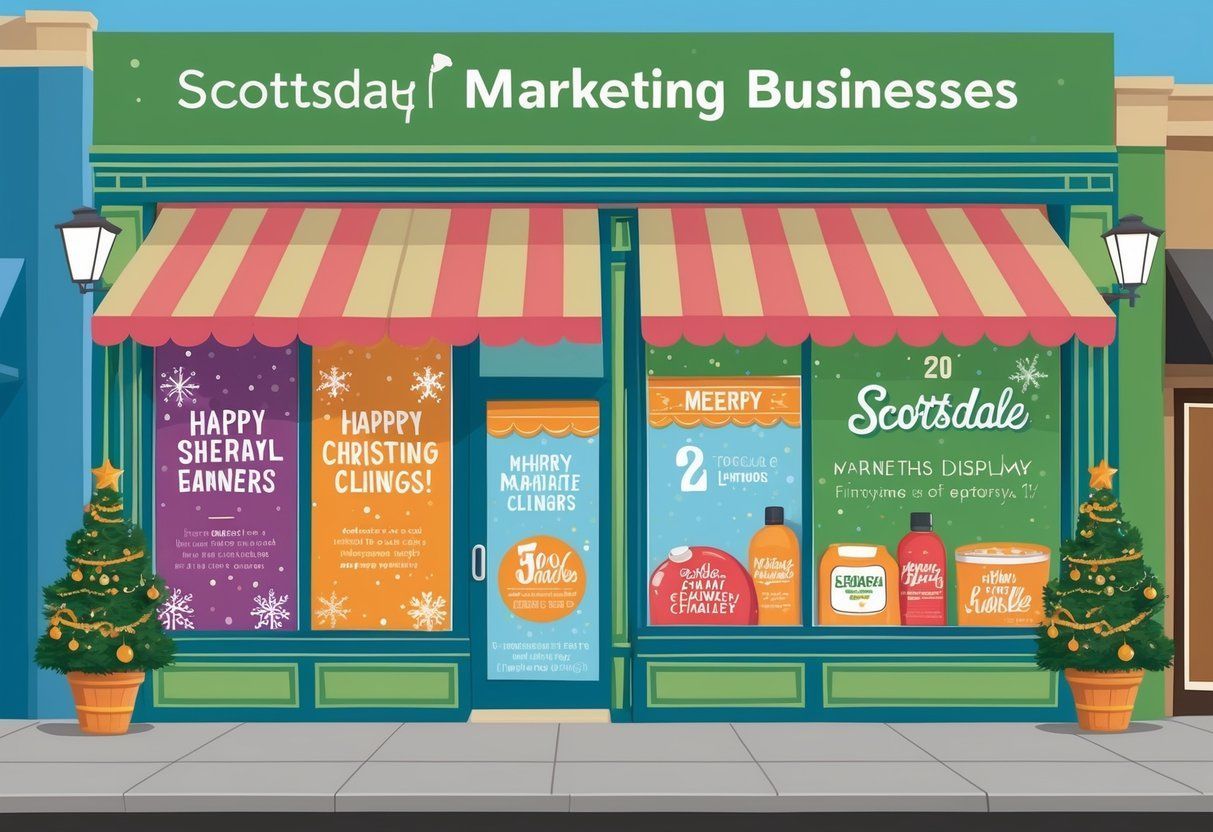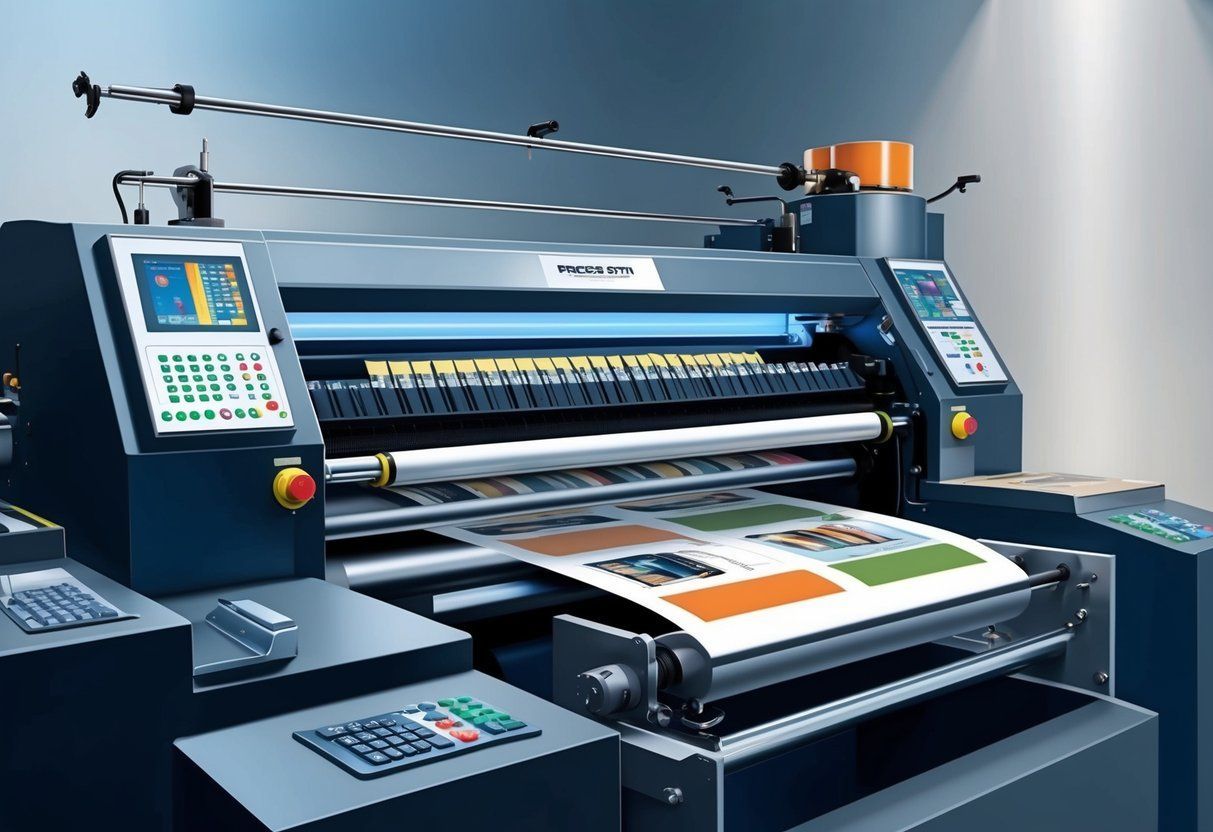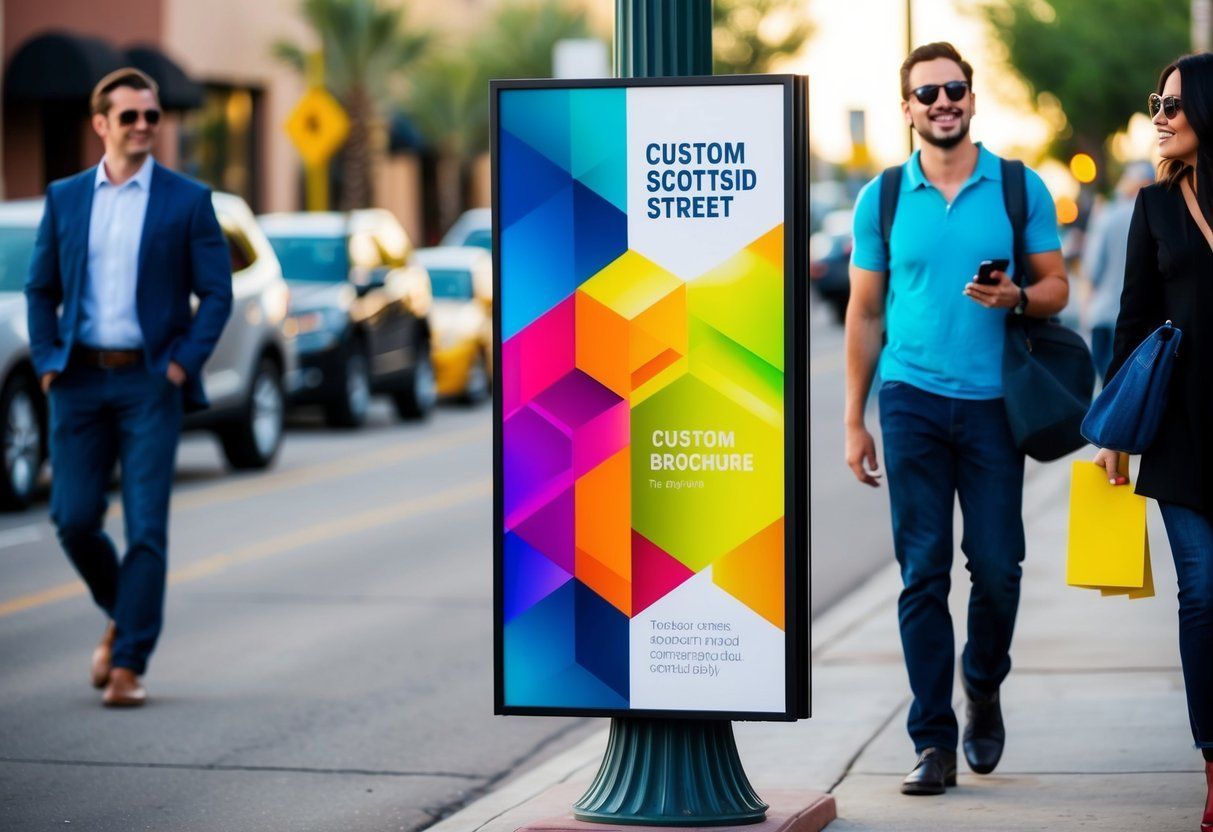Scottsdale Print Shop ) Mesa Print Shop ) Tempe Print Shop ) Phoenix Print Shop ) DC Ranch Print Shop ) Chandler Print Shop ) Peoria Print Shop ) Fountain Hills Print Shop ) Sun City Print Shop ) Glendale Print Shop ) Paradise Valley Print Shop ) Goodyear Print Shop ) Queen Creek Print Shop ) Avondale Print Shop ) Desert Ridge Print Shop ) Apache Junction Print Shop ) North Scottsdale Print Shop ) Pinnacle Peak Print Shop ) Grayawk Print Shop ) Kierland Print Shop ) Windsong Print Shop ) Mcdowell Mountain Ranch Print Shop ) Gainey Ranch Print Shop ) McCormick Ranch Print Shop ) Deer Valley Print Shop ) Arcadia Print Shop ) Troon Print Shop ) Silverleaf Print Shop ) Cave Creek Print Shop ) Old Town Print Shop ) South Scottsdale Print Shop ) Ancala Print Shop ) Central Phoenix Print Shop ) Carefree Print Shop ) Toleson Print Shop ) Ironwood Village Print Shop ) WIndgate Ranch Print Shop ) Northsight Print Shop ) Shea Print Shop ) Tatum Ranch Print Shop ) Casa Grande Print Shop ) Gilbert Print Shop ) Suprise Print Shop ) Buckeye Print Shop ) Scottsdale Banner Printing ) Mesa Banner Printing ) Tempe Banner Printing ) Phoenix Banner Printing ) DC Ranch Banner Printing ) Chandler Banner Printing ) Peoria Banner Printing ) Fountain Hills Banner Printing ) Sun City Banner Printing ) Glendale Banner Printing ) Paradise Valley Banner Printing ) Goodyear Banner Printing ) Queen Creek Banner Printing ) Avondale Banner Printing ) Desert Ridge Banner Printing ) Apache Junction Banner Printing ) North Scottsdale Banner Printing ) Pinnacle Peak Banner Printing ) Grayawk Banner Printing ) Kierland Banner Printing ) Windsong Banner Printing ) Mcdowell Mountain Ranch Banner Printing ) Gainey Ranch Banner Printing ) McCormick Ranch Banner Printing ) Deer Valley Banner Printing ) Arcadia Banner Printing ) Troon Banner Printing ) Silverleaf Banner Printing ) Cave Creek Banner Printing ) Old Town Banner Printing ) South Scottsdale Banner Printing ) Ancala Banner Printing ) Central Phoenix Banner Printing ) Carefree Banner Printing ) Toleson Banner Printing ) Ironwood Village Banner Printing ) WIndgate Ranch Banner Printing ) Northsight Banner Printing ) Shea Banner Printing ) Tatum Ranch Banner Printing ) Casa Grande Banner Printing ) Gilbert Banner Printing ) Suprise Banner Printing ) Buckeye Banner Printing ) Scottsdale Book Binding ) Mesa Book Binding ) Tempe Book Binding ) Phoenix Book Binding ) DC Ranch Book Binding ) Chandler Book Binding ) Peoria Book Binding ) Fountain Hills Book Binding ) Sun City Book Binding ) Glendale Book Binding ) Paradise Valley Book Binding ) Goodyear Book Binding ) Queen Creek Book Binding ) Avondale Book Binding ) Desert Ridge Book Binding ) Apache Junction Book Binding ) North Scottsdale Book Binding ) Pinnacle Peak Book Binding ) Grayawk Book Binding ) Kierland Book Binding ) Windsong Book Binding ) Mcdowell Mountain Ranch Book Binding ) Gainey Ranch Book Binding ) McCormick Ranch Book Binding ) Deer Valley Book Binding ) Arcadia Book Binding ) Troon Book Binding ) Silverleaf Book Binding ) Cave Creek Book Binding ) Old Town Book Binding ) South Scottsdale Book Binding ) Ancala Book Binding ) Central Phoenix Book Binding ) Carefree Book Binding ) Toleson Book Binding ) Ironwood Village Book Binding ) WIndgate Ranch Book Binding ) Northsight Book Binding ) Shea Book Binding ) Tatum Ranch Book Binding ) Casa Grande Book Binding ) Gilbert Book Binding ) Suprise Book Binding ) Buckeye Book Binding ) Scottsdale Booklet Printing ) Mesa Booklet Printing ) Tempe Booklet Printing ) Phoenix Booklet Printing ) DC Ranch Booklet Printing ) Chandler Booklet Printing ) Peoria Booklet Printing ) Fountain Hills Booklet Printing ) Sun City Booklet Printing ) Glendale Booklet Printing ) Paradise Valley Booklet Printing ) Goodyear Booklet Printing ) Queen Creek Booklet Printing ) Avondale Booklet Printing ) Desert Ridge Booklet Printing ) Apache Junction Booklet Printing ) North Scottsdale Booklet Printing ) Pinnacle Peak Booklet Printing ) Grayawk Booklet Printing ) Kierland Booklet Printing ) Windsong Booklet Printing ) Mcdowell Mountain Ranch Booklet Printing ) Gainey Ranch Booklet Printing ) McCormick Ranch Booklet Printing ) Deer Valley Booklet Printing ) Arcadia Booklet Printing ) Troon Booklet Printing ) Silverleaf Booklet Printing ) Cave Creek Booklet Printing ) Old Town Booklet Printing ) South Scottsdale Booklet Printing ) Ancala Booklet Printing ) Central Phoenix Booklet Printing ) Carefree Booklet Printing ) Toleson Booklet Printing ) Ironwood Village Booklet Printing ) WIndgate Ranch Booklet Printing ) Northsight Booklet Printing ) Shea Booklet Printing ) Tatum Ranch Booklet Printing ) Casa Grande Booklet Printing ) Gilbert Booklet Printing ) Suprise Booklet Printing ) Buckeye Booklet Printing ) Scottsdale Brochure Printing ) Mesa Brochure Printing ) Tempe Brochure Printing ) Phoenix Brochure Printing ) DC Ranch Brochure Printing ) Chandler Brochure Printing ) Peoria Brochure Printing ) Fountain Hills Brochure Printing ) Sun City Brochure Printing ) Glendale Brochure Printing ) Paradise Valley Brochure Printing ) Goodyear Brochure Printing ) Queen Creek Brochure Printing ) Avondale Brochure Printing ) Desert Ridge Brochure Printing ) Apache Junction Brochure Printing ) North Scottsdale Brochure Printing ) Pinnacle Peak Brochure Printing ) Grayawk Brochure Printing ) Kierland Brochure Printing ) Windsong Brochure Printing ) Mcdowell Mountain Ranch Brochure Printing ) Gainey Ranch Brochure Printing ) McCormick Ranch Brochure Printing ) Deer Valley Brochure Printing ) Arcadia Brochure Printing ) Troon Brochure Printing ) Silverleaf Brochure Printing ) Cave Creek Brochure Printing ) Old Town Brochure Printing ) South Scottsdale Brochure Printing ) Ancala Brochure Printing ) Central Phoenix Brochure Printing ) Carefree Brochure Printing ) Toleson Brochure Printing ) Ironwood Village Brochure Printing ) WIndgate Ranch Brochure Printing ) Northsight Brochure Printing ) Shea Brochure Printing ) Tatum Ranch Brochure Printing ) Casa Grande Brochure Printing ) Gilbert Brochure Printing ) Suprise Brochure Printing ) Buckeye Brochure Printing ) Scottsdale Business Card Printing ) Mesa Business Card Printing ) Tempe Business Card Printing ) Phoenix Business Card Printing ) DC Ranch Business Card Printing ) Chandler Business Card Printing ) Peoria Business Card Printing ) Fountain Hills Business Card Printing ) Sun City Business Card Printing ) Glendale Business Card Printing ) Paradise Valley Business Card Printing ) Goodyear Business Card Printing ) Queen Creek Business Card Printing ) Avondale Business Card Printing ) Desert Ridge Business Card Printing ) Apache Junction Business Card Printing ) North Scottsdale Business Card Printing ) Pinnacle Peak Business Card Printing ) Grayawk Business Card Printing ) Kierland Business Card Printing ) Windsong Business Card Printing ) Mcdowell Mountain Ranch Business Card Printing ) Gainey Ranch Business Card Printing ) McCormick Ranch Business Card Printing ) Deer Valley Business Card Printing ) Arcadia Business Card Printing ) Troon Business Card Printing ) Silverleaf Business Card Printing ) Cave Creek Business Card Printing ) Old Town Business Card Printing ) South Scottsdale Business Card Printing ) Ancala Business Card Printing ) Central Phoenix Business Card Printing ) Carefree Business Card Printing ) Toleson Business Card Printing ) Ironwood Village Business Card Printing ) WIndgate Ranch Business Card Printing ) Northsight Business Card Printing ) Shea Business Card Printing ) Tatum Ranch Business Card Printing ) Casa Grande Business Card Printing ) Gilbert Business Card Printing ) Suprise Business Card Printing ) Buckeye Business Card Printing ) Scottsdale Catalog Printing ) Mesa Catalog Printing ) Tempe Catalog Printing ) Phoenix Catalog Printing ) DC Ranch Catalog Printing ) Chandler Catalog Printing ) Peoria Catalog Printing ) Fountain Hills Catalog Printing ) Sun City Catalog Printing ) Glendale Catalog Printing ) Paradise Valley Catalog Printing ) Goodyear Catalog Printing ) Queen Creek Catalog Printing ) Avondale Catalog Printing ) Desert Ridge Catalog Printing ) Apache Junction Catalog Printing ) North Scottsdale Catalog Printing ) Pinnacle Peak Catalog Printing ) Grayawk Catalog Printing ) Kierland Catalog Printing ) Windsong Catalog Printing ) Mcdowell Mountain Ranch Catalog Printing ) Gainey Ranch Catalog Printing ) McCormick Ranch Catalog Printing ) Deer Valley Catalog Printing ) Arcadia Catalog Printing ) Troon Catalog Printing ) Silverleaf Catalog Printing ) Cave Creek Catalog Printing ) Old Town Catalog Printing ) South Scottsdale Catalog Printing ) Ancala Catalog Printing ) Central Phoenix Catalog Printing ) Carefree Catalog Printing ) Toleson Catalog Printing ) Ironwood Village Catalog Printing ) WIndgate Ranch Catalog Printing ) Northsight Catalog Printing ) Shea Catalog Printing ) Tatum Ranch Catalog Printing ) Casa Grande Catalog Printing ) Gilbert Catalog Printing ) Suprise Catalog Printing ) Buckeye Catalog Printing ) Scottsdale Commercial Printing ) Mesa Commercial Printing ) Tempe Commercial Printing ) Phoenix Commercial Printing ) DC Ranch Commercial Printing ) Chandler Commercial Printing ) Peoria Commercial Printing ) Fountain Hills Commercial Printing ) Sun City Commercial Printing ) Glendale Commercial Printing ) Paradise Valley Commercial Printing ) Goodyear Commercial Printing ) Queen Creek Commercial Printing ) Avondale Commercial Printing ) Desert Ridge Commercial Printing ) Apache Junction Commercial Printing ) North Scottsdale Commercial Printing ) Pinnacle Peak Commercial Printing ) Grayawk Commercial Printing ) Kierland Commercial Printing ) Windsong Commercial Printing ) Mcdowell Mountain Ranch Commercial Printing ) Gainey Ranch Commercial Printing ) McCormick Ranch Commercial Printing ) Deer Valley Commercial Printing ) Arcadia Commercial Printing ) Troon Commercial Printing ) Silverleaf Commercial Printing ) Cave Creek Commercial Printing ) Old Town Commercial Printing ) South Scottsdale Commercial Printing ) Ancala Commercial Printing ) Central Phoenix Commercial Printing ) Carefree Commercial Printing ) Toleson Commercial Printing ) Ironwood Village Commercial Printing ) WIndgate Ranch Commercial Printing ) Northsight Commercial Printing ) Shea Commercial Printing ) Tatum Ranch Commercial Printing ) Casa Grande Commercial Printing ) Gilbert Commercial Printing ) Suprise Commercial Printing ) Buckeye Commercial Printing ) Scottsdale Coroplast Signs ) Mesa Coroplast Signs ) Tempe Coroplast Signs ) Phoenix Coroplast Signs ) Scottsdale Digital Printing ) Mesa Digital Printing ) Tempe Digital Printing ) Phoenix Digital Printing ) DC Ranch Digital Printing ) Chandler Digital Printing ) Peoria Digital Printing ) Fountain Hills Digital Printing ) Sun City Digital Printing ) Glendale Digital Printing ) Paradise Valley Digital Printing ) Goodyear Digital Printing ) Queen Creek Digital Printing ) Avondale Digital Printing ) Desert Ridge Digital Printing ) Apache Junction Digital Printing ) North Scottsdale Digital Printing ) Pinnacle Peak Digital Printing ) Grayawk Digital Printing ) Kierland Digital Printing ) Windsong Digital Printing ) Mcdowell Mountain Ranch Digital Printing ) Gainey Ranch Digital Printing ) McCormick Ranch Digital Printing ) Deer Valley Digital Printing ) Arcadia Digital Printing ) Troon Digital Printing ) Silverleaf Digital Printing ) Cave Creek Digital Printing ) Old Town Digital Printing ) South Scottsdale Digital Printing ) Ancala Digital Printing ) Central Phoenix Digital Printing ) Carefree Digital Printing ) Toleson Digital Printing ) Ironwood Village Digital Printing ) WIndgate Ranch Digital Printing ) Northsight Digital Printing ) Shea Digital Printing ) Tatum Ranch Digital Printing ) Casa Grande Digital Printing ) Gilbert Digital Printing ) Suprise Digital Printing ) Buckeye Digital Printing ) Scottsdale Direct Mailing Services ) Mesa Direct Mailing Services ) Tempe Direct Mailing Services ) Phoenix Direct Mailing Services ) DC Ranch Direct Mailing Services ) Chandler Direct Mailing Services ) Peoria Direct Mailing Services ) Fountain Hills Direct Mailing Services ) Sun City Direct Mailing Services ) Glendale Direct Mailing Services ) Paradise Valley Direct Mailing Services ) Goodyear Direct Mailing Services ) Queen Creek Direct Mailing Services ) Avondale Direct Mailing Services ) Desert Ridge Direct Mailing Services ) Apache Junction Direct Mailing Services ) North Scottsdale Direct Mailing Services ) Pinnacle Peak Direct Mailing Services ) Grayawk Direct Mailing Services ) Kierland Direct Mailing Services ) Windsong Direct Mailing Services ) Mcdowell Mountain Ranch Direct Mailing Services ) Gainey Ranch Direct Mailing Services ) McCormick Ranch Direct Mailing Services ) Deer Valley Direct Mailing Services ) Arcadia Direct Mailing Services ) Troon Direct Mailing Services ) Silverleaf Direct Mailing Services ) Cave Creek Direct Mailing Services ) Old Town Direct Mailing Services ) South Scottsdale Direct Mailing Services ) Ancala Direct Mailing Services ) Central Phoenix Direct Mailing Services ) Carefree Direct Mailing Services ) Toleson Direct Mailing Services ) Ironwood Village Direct Mailing Services ) WIndgate Ranch Direct Mailing Services ) Northsight Direct Mailing Services ) Shea Direct Mailing Services ) Tatum Ranch Direct Mailing Services ) Casa Grande Direct Mailing Services ) Gilbert Direct Mailing Services ) Suprise Direct Mailing Services ) Buckeye Direct Mailing Services ) Scottsdale Flyer Printing ) Mesa Flyer Printing ) Tempe Flyer Printing ) Phoenix Flyer Printing ) DC Ranch Flyer Printing ) Chandler Flyer Printing ) Peoria Flyer Printing ) Fountain Hills Flyer Printing ) Sun City Flyer Printing ) Glendale Flyer Printing ) Paradise Valley Flyer Printing ) Goodyear Flyer Printing ) Queen Creek Flyer Printing ) Avondale Flyer Printing ) Desert Ridge Flyer Printing ) Apache Junction Flyer Printing ) North Scottsdale Flyer Printing ) Pinnacle Peak Flyer Printing ) Grayawk Flyer Printing ) Kierland Flyer Printing ) Windsong Flyer Printing ) Mcdowell Mountain Ranch Flyer Printing ) Gainey Ranch Flyer Printing ) McCormick Ranch Flyer Printing ) Deer Valley Flyer Printing ) Arcadia Flyer Printing ) Troon Flyer Printing ) Silverleaf Flyer Printing ) Cave Creek Flyer Printing ) Old Town Flyer Printing ) South Scottsdale Flyer Printing ) Ancala Flyer Printing ) Central Phoenix Flyer Printing ) Carefree Flyer Printing ) Toleson Flyer Printing ) Ironwood Village Flyer Printing ) WIndgate Ranch Flyer Printing ) Northsight Flyer Printing ) Shea Flyer Printing ) Tatum Ranch Flyer Printing ) Casa Grande Flyer Printing ) Gilbert Flyer Printing ) Suprise Flyer Printing ) Buckeye Flyer Printing ) Scottsdale Graphic Design ) Mesa Graphic Design ) Tempe Graphic Design ) Phoenix Graphic Design ) DC Ranch Graphic Design ) Chandler Graphic Design ) Peoria Graphic Design ) Fountain Hills Graphic Design ) Sun City Graphic Design ) Glendale Graphic Design ) Paradise Valley Graphic Design ) Goodyear Graphic Design ) Queen Creek Graphic Design ) Avondale Graphic Design ) Desert Ridge Graphic Design ) Apache Junction Graphic Design ) North Scottsdale Graphic Design ) Pinnacle Peak Graphic Design ) Grayawk Graphic Design ) Kierland Graphic Design ) Windsong Graphic Design ) Mcdowell Mountain Ranch Graphic Design ) Gainey Ranch Graphic Design ) McCormick Ranch Graphic Design ) Deer Valley Graphic Design ) Arcadia Graphic Design ) Troon Graphic Design ) Silverleaf Graphic Design ) Cave Creek Graphic Design ) Old Town Graphic Design ) South Scottsdale Graphic Design ) Ancala Graphic Design ) Central Phoenix Graphic Design ) Carefree Graphic Design ) Toleson Graphic Design ) Ironwood Village Graphic Design ) WIndgate Ranch Graphic Design ) Northsight Graphic Design ) Shea Graphic Design ) Tatum Ranch Graphic Design ) Casa Grande Graphic Design ) Gilbert Graphic Design ) Suprise Graphic Design ) Buckeye Graphic Design ) Scottsdale Large Format Printing ) Mesa Large Format Printing ) Tempe Large Format Printing ) Phoenix Large Format Printing ) DC Ranch Large Format Printing ) Chandler Large Format Printing ) Peoria Large Format Printing ) Fountain Hills Large Format Printing ) Sun City Large Format Printing ) Glendale Large Format Printing ) Paradise Valley Large Format Printing ) Goodyear Large Format Printing ) Peoria Postcard Printing ) Fountain Hills Postcard Printing ) Sun City Postcard Printing ) Glendale Postcard Printing ) Paradise Valley Postcard Printing ) Goodyear Postcard Printing ) Queen Creek Postcard Printing ) Avondale Postcard Printing ) Desert Ridge Postcard Printing ) Apache Junction Postcard Printing ) North Scottsdale Postcard Printing ) Pinnacle Peak Postcard Printing ) Grayawk Postcard Printing ) Kierland Postcard Printing ) Windsong Postcard Printing ) Mcdowell Mountain Ranch Postcard Printing ) Gainey Ranch Postcard Printing ) McCormick Ranch Postcard Printing ) Deer Valley Postcard Printing ) Arcadia Postcard Printing ) Troon Postcard Printing ) Silverleaf Postcard Printing ) Cave Creek Postcard Printing ) Old Town Postcard Printing ) South Scottsdale Postcard Printing ) Ancala Postcard Printing ) Central Phoenix Postcard Printing ) Carefree Postcard Printing ) Toleson Postcard Printing ) Ironwood Village Postcard Printing ) WIndgate Ranch Postcard Printing ) Northsight Postcard Printing ) Shea Postcard Printing ) Tatum Ranch Postcard Printing ) Casa Grande Postcard Printing ) Gilbert Postcard Printing ) Suprise Postcard Printing ) Buckeye Postcard Printing ) Scottsdale Poster Printing ) Mesa Poster Printing ) Tempe Poster Printing ) Phoenix Poster Printing ) DC Ranch Poster Printing ) Chandler Poster Printing ) Peoria Poster Printing ) Fountain Hills Poster Printing ) Sun City Poster Printing ) Glendale Poster Printing ) Paradise Valley Poster Printing ) Goodyear Poster Printing ) Queen Creek Poster Printing ) Avondale Poster Printing ) Desert Ridge Poster Printing ) Apache Junction Poster Printing ) North Scottsdale Poster Printing ) Pinnacle Peak Poster Printing ) Grayawk Poster Printing ) Kierland Poster Printing ) Windsong Poster Printing ) Mcdowell Mountain Ranch Poster Printing ) Gainey Ranch Poster Printing ) McCormick Ranch Poster Printing ) Deer Valley Poster Printing ) Arcadia Poster Printing ) Troon Poster Printing ) Silverleaf Poster Printing ) Cave Creek Poster Printing ) Old Town Poster Printing ) South Scottsdale Poster Printing ) Ancala Poster Printing ) Central Phoenix Poster Printing ) Carefree Poster Printing ) Toleson Poster Printing ) Ironwood Village Poster Printing ) WIndgate Ranch Poster Printing ) Northsight Poster Printing ) Shea Poster Printing ) Tatum Ranch Poster Printing ) Casa Grande Poster Printing ) Gilbert Poster Printing ) Suprise Poster Printing ) Buckeye Poster Printing ) Scottsdale Promotional Items Printing )
High-Quality Printing For Businesses: Key Considerations and Expectations
High-quality printing can make a big difference for businesses. Whether it’s for marketing materials or branding, getting the best print results is key. Knowing what to expect when placing an order can help you make the right choices.
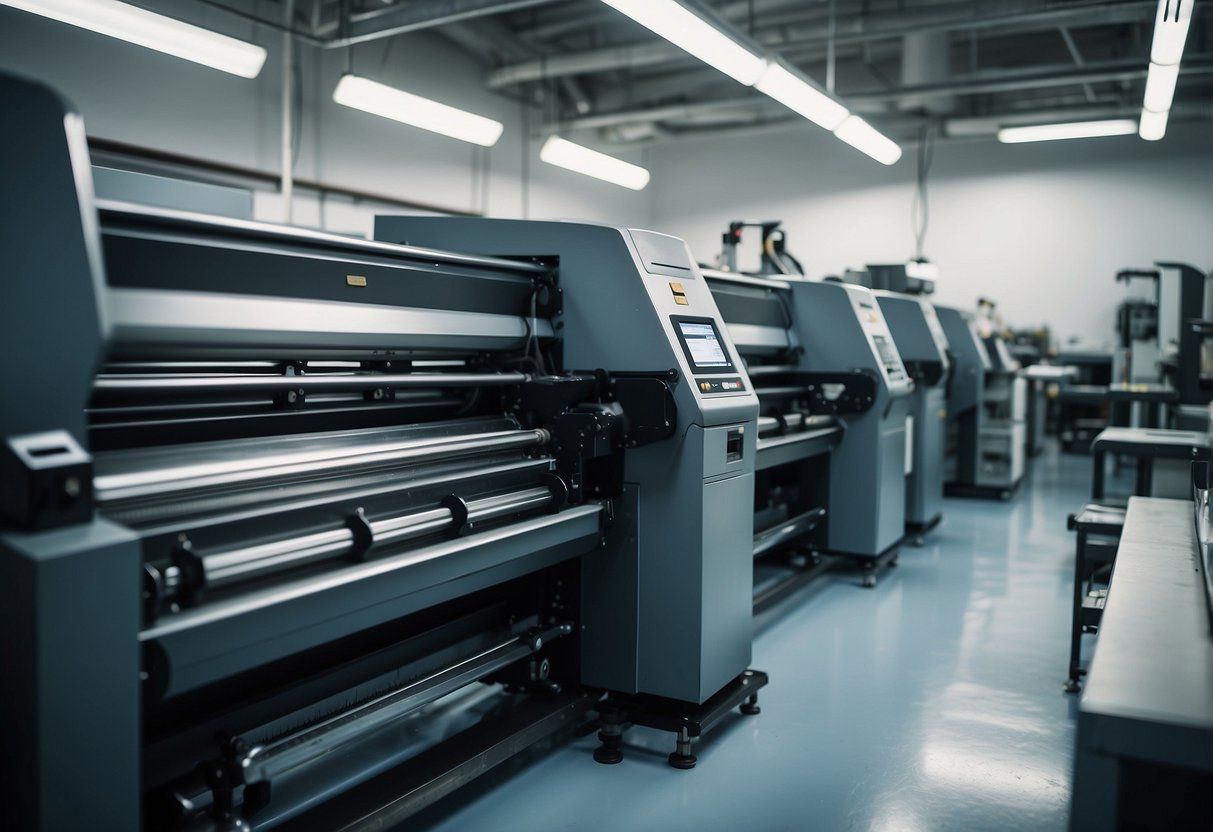
When choosing a print partner , businesses should look for quality and reliability. This means checking out print samples and customer reviews. It’s also important to understand the cost and pricing structures to ensure you’re getting value for your money.
Customization options are crucial because they allow businesses to create unique, personalized items. Having a wide range of products to choose from can also be beneficial. Make sure to consider order fulfillment and the level of customer support provided.
Key Takeaways
- High-quality printing is crucial for business marketing and branding
- Choosing a reliable print partner involves checking reviews and samples
- Customization and a wide product range are important in printing orders
Understanding High-Quality Printing
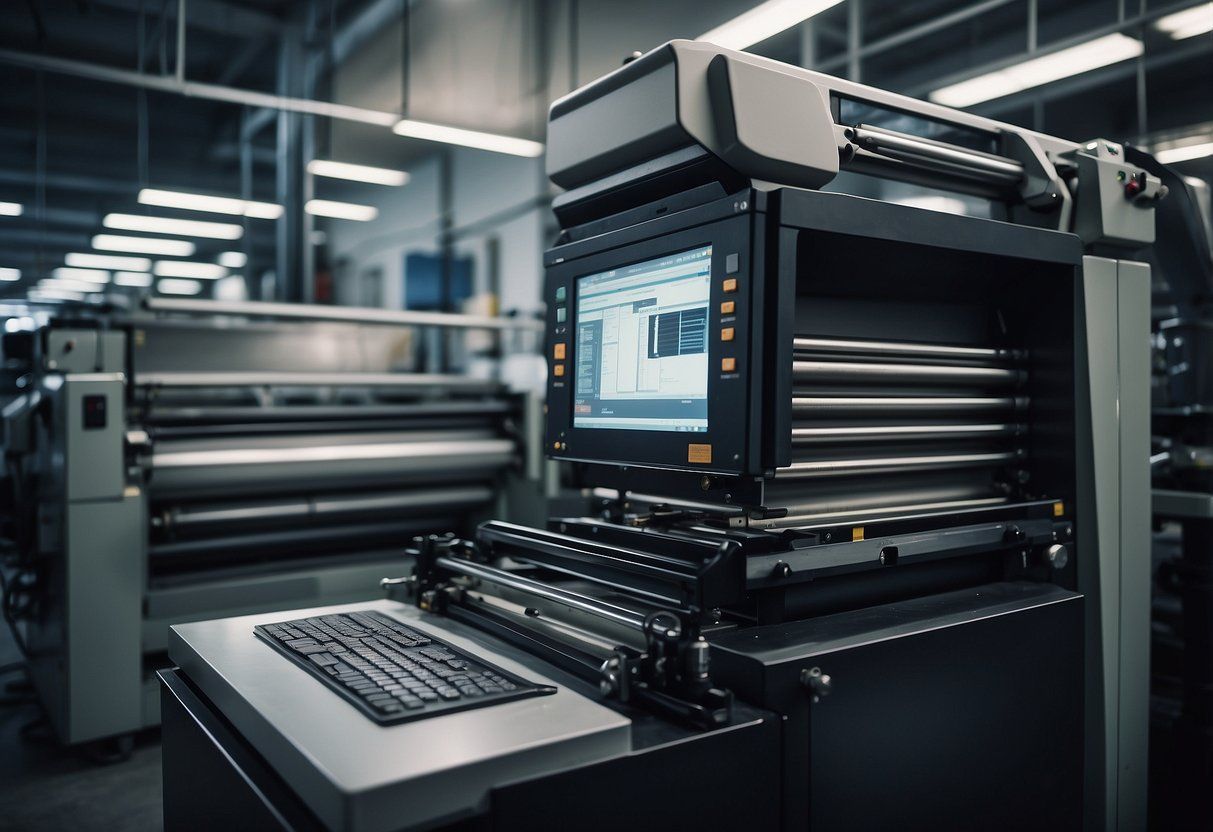
High-quality printing involves precise details, premium materials, and brand consistency. Each aspect plays a crucial role in effective branding and marketing.
Defining Quality in Printing
Quality in printing is measured by sharp details , vivid colors , and the optimal use of space. Companies must ensure that images aren’t pixelated and text is readable.
- Resolution : High DPI (dots per inch) ensures crisp images.
- Color accuracy : Consistent colors maintain brand identity.
- Paper Quality : Heavier paper feels more luxurious and durable.
Without these elements, printed materials can look cheap and unprofessional, hurting the business’s image.
Importance of Premium Materials
Using premium materials impacts how the final product appears and feels.
- Paper Types : Glossy finishes make colors pop, while matte finishes offer a refined look.
- Inks : High-quality inks provide better color retention and avoid smudging.
- Finishes : Lamination and coatings add durability and an extra layer of polish.
Investing in premium materials pays off by enhancing the perceived value of the products.
The Role of Printing in Branding
Printing plays a key role in branding by ensuring consistent and professional-looking marketing materials. Consistency in fonts, colors, and images across all printed items reinforces brand identity.
- Consistency : Uniformity across all marketing materials builds trust.
- Professionalism : High-quality prints reflect a professional image.
- Memorability : Well-designed, high-quality printed materials are more likely to be remembered.
Effective printing enhances a company’s presence and leaves a lasting impression on customers.
Choosing the Right Print Partner
Selecting the perfect print partner is crucial for businesses aiming for high-quality prints. It’s important to look for key features in print providers and compare options like Printify, Moo, and Printful.
What to Look for in a Print Provider
When choosing a print provider, a few factors are vital. Look at the quality of print materials and the variety of services they offer. Good providers will have a wide range of paper types, finishes, and sizes to meet various needs.
Customer reviews offer valuable insights. Positive feedback can indicate reliable service and good customer support. Negative reviews might highlight issues like delays or poor print quality.
Pricing is another key factor. Compare quotes from different providers to ensure competitive rates without sacrificing quality. Volume discounts can also be beneficial for large orders. It’s essential to find a provider that balances cost and quality effectively.
Comparing Printify, Moo, and Printful
Printify is known for its wide range of printing options and integration with e-commerce platforms. This makes it suitable for online businesses. They offer competitive pricing but sometimes face issues with print consistency.
Moo specializes in high-quality business cards and marketing materials. They offer unique features like rounded corners and luxe paper options. Moo tends to be pricier, which may be a downside for some businesses. Their customer reviews often highlight top-notch quality and strong customer service.
Printful offers a broad range of products, from clothing to posters. They also provide fulfillment services. This provider is ideal for businesses that need both product printing and shipping solutions. Printful’s pricing is moderate, and reviews frequently mention their efficient service and good print quality.
By comparing these three providers, businesses can identify which one aligns best with their specific needs and preferences.
Cost and Pricing Structures
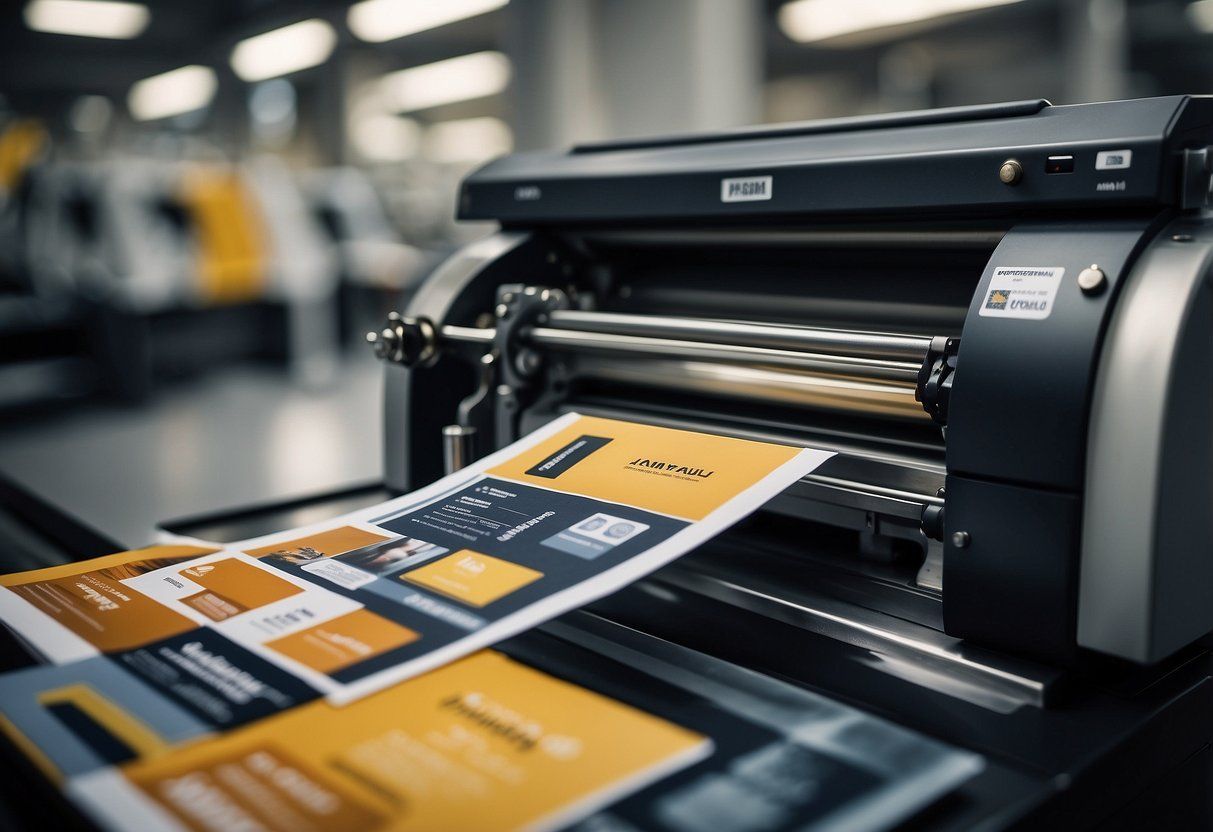
When ordering high-quality printing for businesses, understanding various cost factors and their effect on profit margins is crucial. The following details will help you grasp these important aspects.
Understanding the Costs of Printing
Printing costs depend on several factors. These include:
- Material type : Choosing between paper grades, gloss, and finishes.
- Quantity : Larger orders often reduce the price per unit.
- Color options : Full-color prints generally cost more than black-and-white.
- Special finishes : Embossing, foil stamping, and other effects can add to the cost.
Each of these choices can significantly impact the total expense. Businesses should consider their specific needs and balance quality with cost efficiency to ensure they get value for their money.
How Pricing Affects Profit Margins
The pricing of printed materials influences a business’s profit margins.
Bulk discounts : Ordering in bulk can lower costs and increase profits.
Efficient budgeting : Allocating funds wisely for different printing needs helps maintain a healthy profit margin.
Quality vs. cost : Higher quality often means higher prices, but it may attract more customers, justifying the expense.
Comparing different printing providers can help find competitive prices, ensuring businesses don’t overspend and keep their profit margins healthy.
Design and Customization Options
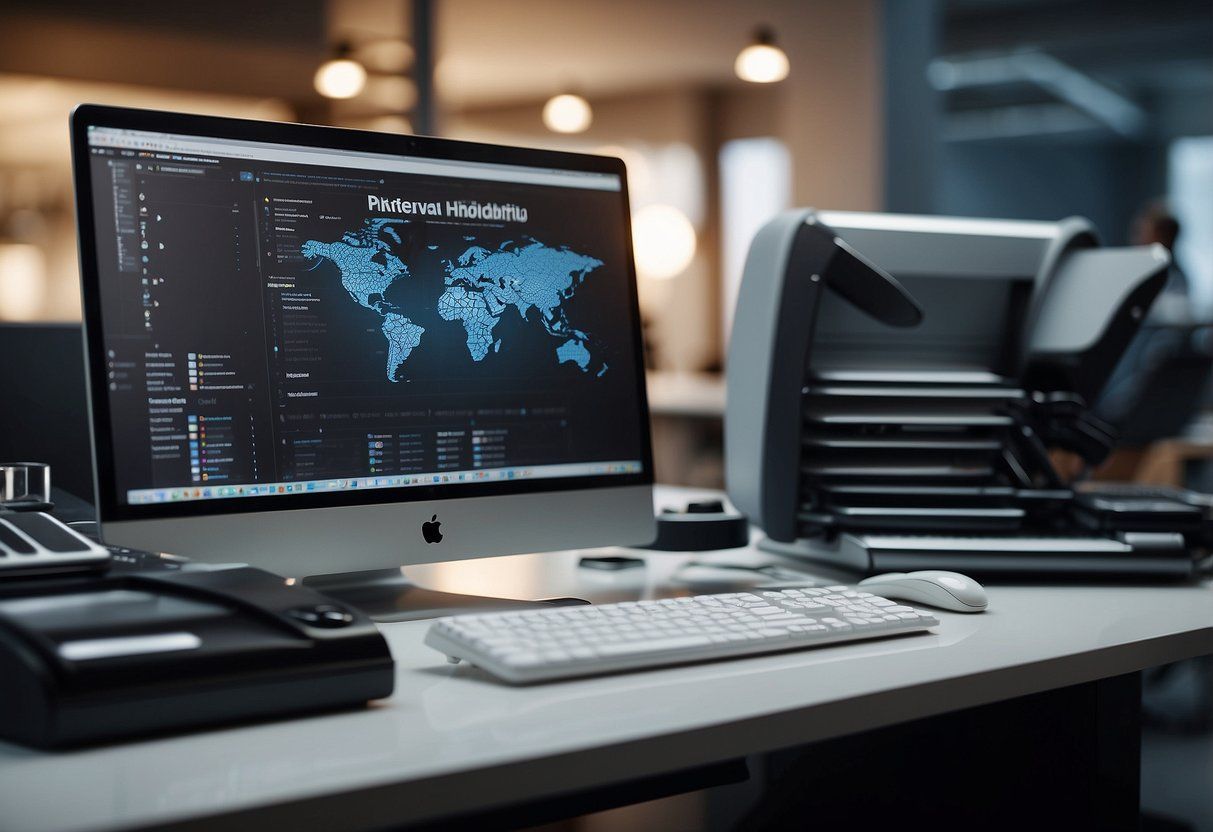
Businesses can greatly benefit from the variety of design and customization options available in high-quality printing. Leveraging advanced design tools and choosing between templates and custom designs can significantly impact the final printed product.
Leveraging Design Tools for Customization
Modern design tools provide a plethora of customization options. These tools allow businesses to create unique, branded materials that stand out. Software such as Adobe Creative Suite and Canva offer user-friendly interfaces with powerful features for both beginners and professionals.
These tools often include a range of color palettes , fonts , and graphics that users can drag and drop. The ability to upload a company logo or specific images also enhances personalization. Businesses can adjust layouts, sizes, and styles to match their branding precisely.
Moreover, some printing companies offer online customization tools . These platforms often have built-in previews and real-time editing options. This feature ensures that what you design on screen is exactly what gets printed, reducing the risk of errors.
Templates vs. Custom Designs
Choosing between templates and custom designs depends on the business’s needs and budget. Templates are pre-designed layouts that provide a quick and cost-effective solution. They are ideal for businesses that need consistent branding across multiple items without the need for a designer.
Templates typically cover a wide range of needs, from business cards to brochures. They also allow for easy insertion of text, logos, and other branding elements. This option helps maintain a professional appearance without the time investment of a custom design.
On the other hand, custom designs offer complete creative freedom. Businesses can work with designers to develop unique pieces that align perfectly with their branding and vision. This process can include choosing specific materials, special finishes , and unique sizes or shapes.
Custom-printed items often stand out more and can leave a lasting impression on clients and customers. Though it is a more time-consuming and sometimes more expensive option, the result is a product that is exclusively tailored to the business’s identity.
Product Range and Selection
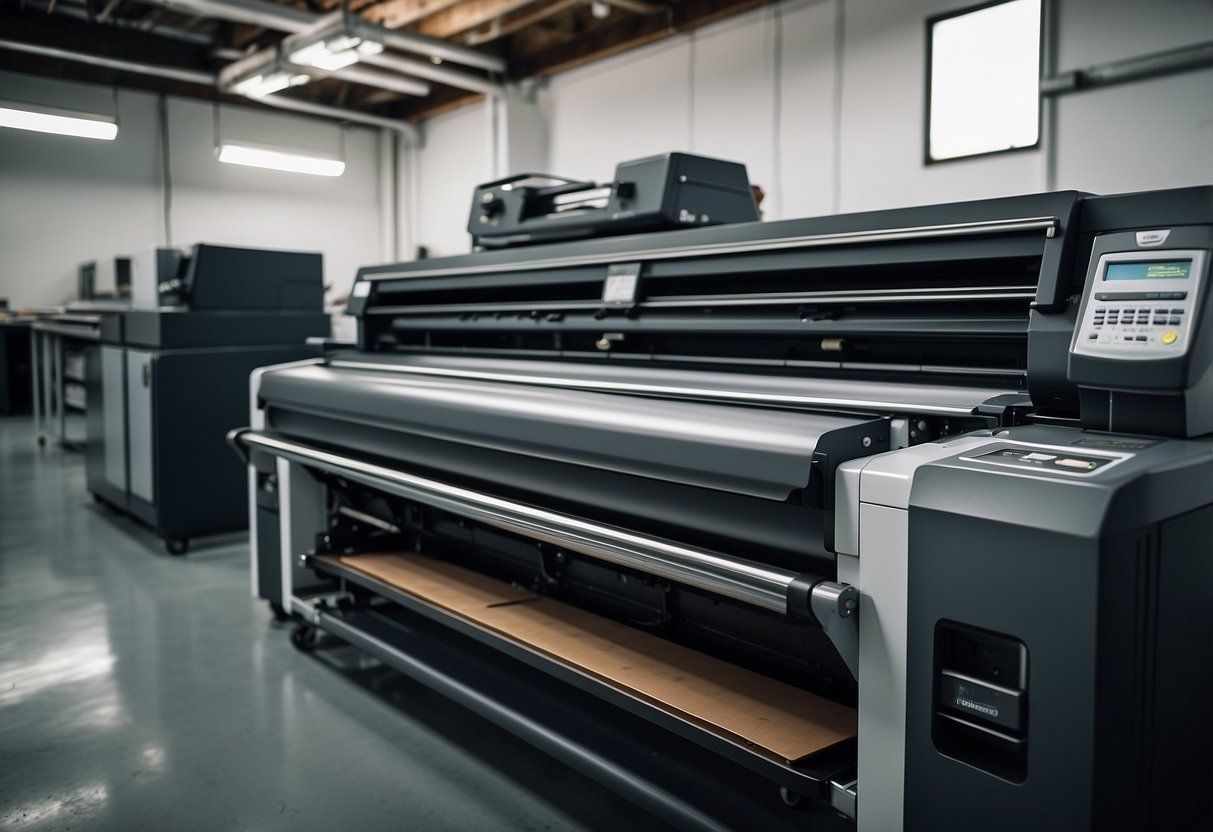
When ordering high-quality printing for businesses, it’s crucial to understand the variety of products available. Businesses can expect a broad selection that caters to various needs, from promotional materials to everyday office supplies.
Diverse Merchandise for Business Needs
Businesses have access to a wide range of printed merchandise. These include essential items like business cards , flyers , posters , and postcards. Each product serves a specific purpose, whether promoting a brand or providing necessary information.
- Business Cards : Essential for networking and professional introductions.
- Flyers and Posters : Effective for advertising events or promotions.
- Postcards : Useful for direct mail campaigns and customer outreach.
Other notable items include brochures and labels. Brochures provide detailed information about services or products, while labels are perfect for branding and identification. High-quality merchandise helps make a strong impression on clients and partners.
Stationery, Marketing Materials, and More
Printed stationery and marketing materials are also vital for business functions. Stationery items like notebooks and calendars keep employees organized and reflect the company’s brand.
- Notebooks : Handy for meetings, note-taking, and planning.
- Calendars : Useful for scheduling and reminding clients of important dates.
Marketing materials include banners and brochures. Banners are excellent for trade shows and events, drawing attention and conveying key messages. Brochures offer a compact way to share detailed information about services and products.
These printed products support various business activities and reinforce branding efforts.
Fulfilling Business Orders
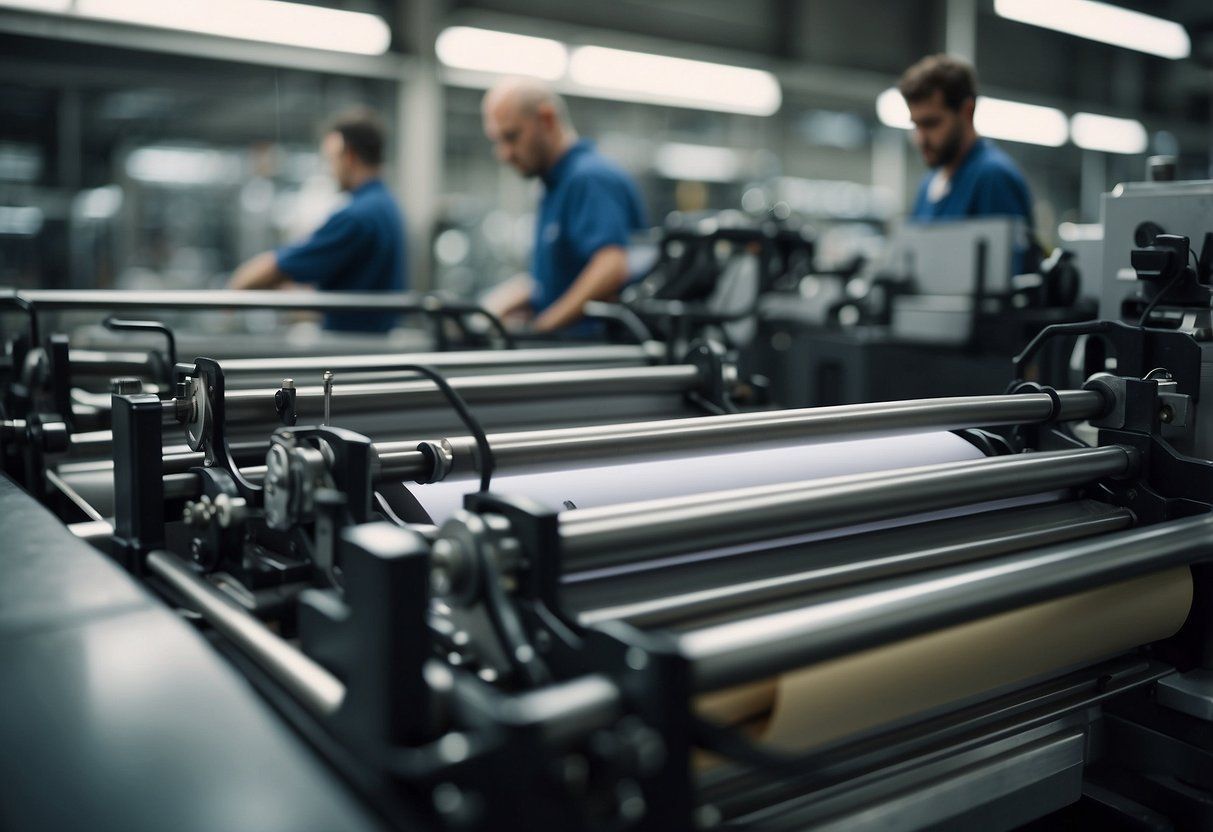
When fulfilling business orders, it’s crucial to manage inventory and streamline the order process efficiently. Moreover, packaging and shipping play vital roles in ensuring timely delivery and customer satisfaction.
Inventory Management and Order Processing
Effective inventory management ensures that products are available when needed. Businesses must keep track of stock levels using inventory management software. Accurate data helps in predicting demand and avoiding stockouts.
Order processing involves several steps. First, orders are received and verified. Then, items are picked from the warehouse, packed, and prepared for shipment. Automation can speed up this process and reduce human error.
Turnaround time is essential. Faster processing leads to quicker delivery. Ensuring that the inventory is updated in real-time prevents delays in order fulfillment.
Packaging and Shipping Considerations
Proper packaging protects products during transit. Choosing the right packaging materials reduces the risk of damage. This requires understanding the nature of the products being shipped.
Shipping speed is another crucial factor. Businesses should offer multiple shipping options to meet different customer needs. Collaborating with reliable carriers ensures timely delivery.
Tracking shipments helps in keeping customers informed. Real-time updates build trust and satisfaction. Efficient packaging and reliable shipping services are vital for repeat business and positive reviews.
Integrations and E-Commerce Platforms

Integrating high-quality printing services with e-commerce platforms can streamline business operations. This section covers how to connect to Shopify and automate the print-on-demand process.
Connecting to Shopify and Other Platforms
Connecting your business to e-commerce platforms like Shopify simplifies the order process. Business owners can easily sync their online store with printing services. This ensures that orders placed on Shopify are automatically sent to the printer.
Popular platforms that support such integrations include Shopify , WooCommerce , and BigCommerce . These platforms often have built-in tools or apps to make integration straightforward. Businesses can use these tools to manage inventory, track orders, and provide real-time updates to customers.
Hints for Integration :
- Use platform-specific APIs or plugins.
- Ensure data synchronization is secure.
- Regularly update integration tools for compatibility.
Automating the Print-on-Demand Process
Automating the print-on-demand process saves time and reduces errors. When an order is placed, the order details are sent directly to the printer without manual intervention. This automation can be set up using APIs or specific e-commerce plugins.
Automation features to look for :
- Real-time order processing
- Automatic shipment tracking
- Inventory management
Tools like Printful, Printify, and Teespring are examples of services that provide easy integration and automation. They allow businesses to focus more on marketing and customer service while the printing and logistics are handled seamlessly.
Support and Customer Service
Effective support and customer service can make or break your experience when ordering high-quality printing. Businesses should expect responsive assistance, clear communication, and valuable insights from customer reviews and feedback.
Navigating Customer Support Channels
Navigating customer support channels is crucial for resolving issues quickly. Phone support is often the quickest way to get help. Many businesses have support hotlines with live agents ready to assist. Email support offers a paper trail. It’s useful for detailed queries and issues that aren’t time-sensitive.
Many printing companies now offer live chat support on their websites. This can be a convenient middle ground—faster than email but less immediate than a phone call. Automated chatbots can handle simple queries, while human agents take over more complex issues.
FAQs and online forums can also be a valuable resource. These platforms often contain answers to common questions and allow users to help each other. Checking these resources first can save time when contacting support.
Leveraging Customer Reviews and Feedback
Customer reviews and feedback offer insights into the company’s customer service quality. Look for patterns in reviews. If multiple customers mention the same issue, it might be a recurring problem.
Reviews can highlight the responsiveness and effectiveness of customer support. Positive feedback often mentions how quickly issues were resolved and the professionalism of the support team. Negative feedback may reveal potential red flags.
Businesses should not only read reviews but also engage with feedback. Responding to reviews shows a commitment to customer satisfaction. It can also provide an opportunity to address any issues publicly, building trust with potential customers.
Marketing Your Printed Products
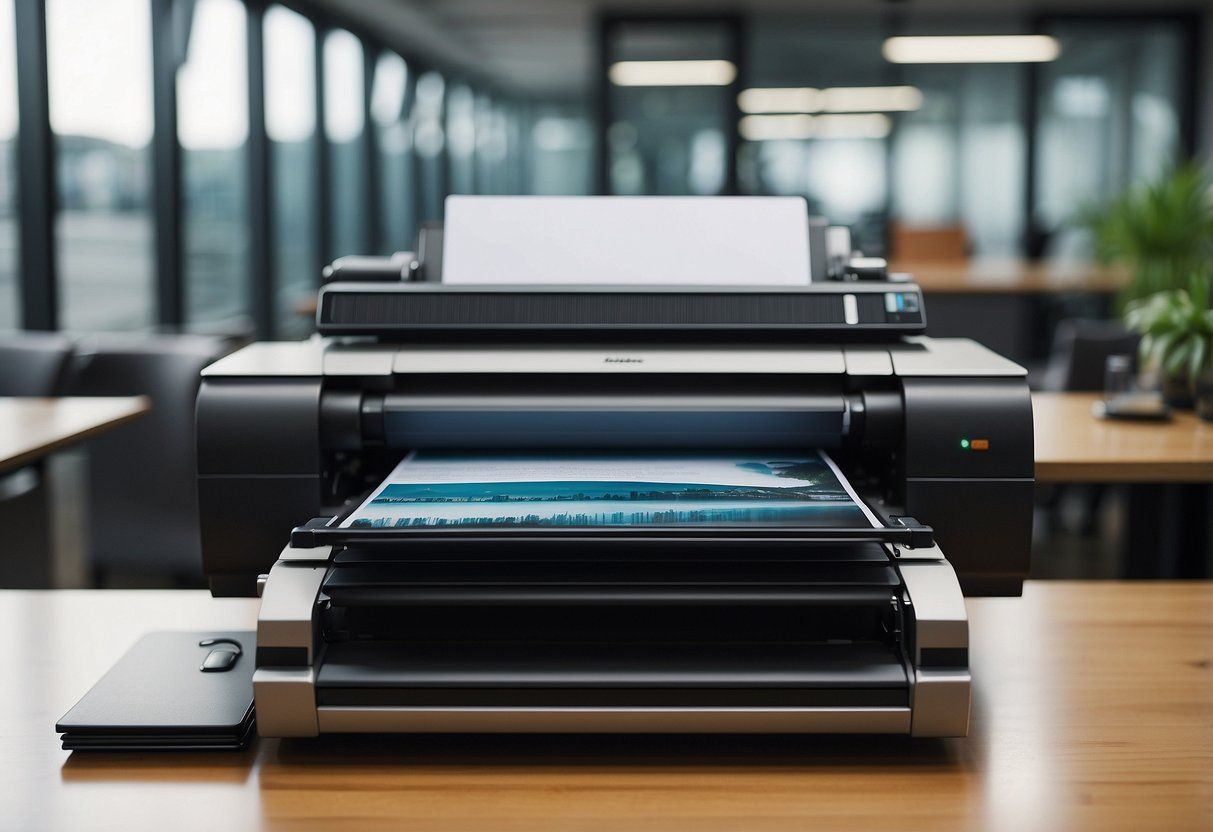
To make the most out of your printed products, it is essential to employ effective marketing strategies. Printed merchandise can expand brand awareness and drive sales both online and in physical stores.
Strategies for Promoting Printed Merchandise
Using a variety of sales channels ensures your printed products reach a wider audience. Combine ecommerce stores and brick-and-mortar locations for greater market penetration. Highlight the quality and benefits of the items in your marketing materials.
Customer service plays a crucial role. Ensure your team is trained on the details of each product so they can answer questions confidently.
Utilize social media platforms to showcase your printed products. Post high-quality photos and videos to attract attention. Engage with customers by responding to comments and messages.
Run promotions and special offers to drive interest. Coupons, discounts, and limited-time offers can entice customers to make a purchase.
Using Print as a Tool for Company Growth
Printed materials are not just for direct sales; they can enhance branding and company growth. Distribute flyers , brochures , and business cards at events and in stores.
Sponsor local events and give away branded merchandise to boost brand recognition .
Consider targeted mailings to reach specific demographics. Personalized letters, catalogs, and postcards can significantly impact customer engagement.
Partner with other businesses to co-brand printed materials. It opens up new marketing avenues and can introduce your products to different customer bases.
Regularly update and refresh your printed materials to keep your branding consistent and current. New designs can catch the eye and reinvigorate customer interest.
Environmental Considerations
Businesses need to keep an eye on their impact on the environment when it comes to printing. By choosing eco-friendly options and supporting ethical practices, they can make a difference.
Eco-Friendly Printing Options
Eco-friendly printing uses materials and processes that reduce harm to the environment. Recycled paper is a great start. It saves trees and uses less energy than new paper. Look for paper with certifications like FSC (Forest Stewardship Council). This means the paper comes from responsibly managed forests.
Another option is using soy-based or vegetable-based inks. These inks are less toxic than traditional petroleum-based inks. They also produce brighter colors. Digital printing, which uses less waste, is another eco choice. It doesn’t need printing plates, and it’s great for short-run jobs.
Businesses can also choose printers that follow sustainable practices. This includes reducing energy use and recycling waste. Some printers even use renewable energy sources like wind or solar power. All these choices show that a business cares about the planet.
Ethical Practices in the Print Industry
Ethical practices in printing involve fair labor and sustainable methods. This means treating workers fairly and paying them a living wage. It also means using safe and healthy work conditions. Some certifications like Fair Trade help identify companies that follow these standards.
Ethical printing also involves sourcing materials responsibly. Avoiding materials from illegal logging or conflict zones is important. Businesses should ask their printers about the sources of their materials.
Supporting printers who are transparent about their practices is key. It shows a commitment to ethics and helps build a trusted brand image. By choosing ethical printing, businesses not only protect the environment but also support fair labor practices.
The Financial Aspect
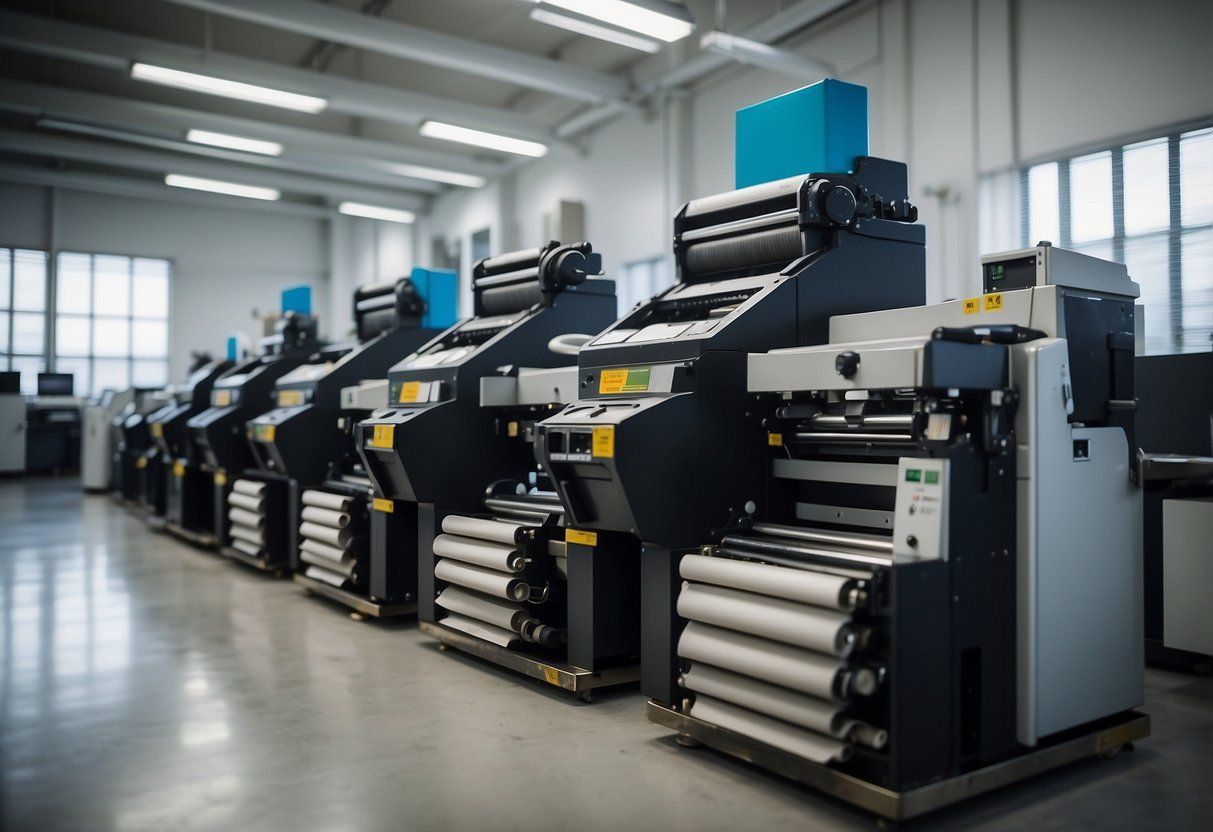
Considering the financial aspect of high-quality printing is crucial. Businesses should understand how to budget for print marketing and get the most value out of their spending.
Budgeting for Print Marketing
Businesses need to allocate funds wisely for print marketing. The cost of materials, designs, and distribution should be factored into the budget . It’s essential to get quotes from multiple print vendors to compare pricing .
Creating a clear budget helps prevent overspending. Prioritize high-quality products that effectively communicate the brand’s message. List all possible expenses like paper types, ink, and size options.
Smart budgeting will ensure that companies get the best return on investment (ROI) without compromising on quality.
Maximizing Value through Strategic Spending
Strategic spending helps maximize the value of print marketing efforts. Investing in high-quality products ensures better brand perception. Opt for durable materials that are affordable yet impressive.
Consider volume discounts when ordering larger quantities. Also, track which marketing materials yield the best results to adjust future spending.
Businesses should regularly evaluate their print strategies. Analyzing past campaigns can reveal what works best, allowing for smarter future investments.
Frequently Asked Questions
When businesses order high-quality printing, they need to consider various factors such as paper quality, printing techniques, color accuracy, resolution, and turnaround times to achieve the best results.
What factors should be considered to achieve high-quality printing results for professional needs?
Key factors include printer technology, ink quality, and design details like font size and image resolution.
How does paper quality affect the overall print result for business materials?
Higher paper quality ensures clearer images and better color reproduction, giving materials a more professional look.
What printing techniques are recommended for producing premium business documents and marketing materials?
Offset printing and digital printing are commonly used for high-quality results. UV coating and embossing can add a luxurious touch.
Can you explain the importance of color accuracy in high-quality printing for branding purposes?
Accurate colors ensure that brand logos and marketing materials look consistent, which helps maintain a strong and recognizable brand identity.
How do resolution and DPI impact the printing quality of business collateral?
Higher resolution and DPI (dots per inch) provide sharper, more detailed images, crucial for professional-looking brochures and banners.
What are the common turnaround times for high-quality printing orders in a business context?
Turnaround times vary but typically range from 2 to 7 business days, depending on the complexity of the print job and order size.…
